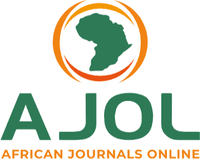Effect of Rice Blast Pathogen (Pyricularia oryzae) on the Nutritional Profile of Rice in Nigeria's Northern Guinea Savannah Ecological Zone
DOI:
https://doi.org/10.56892/bima.v8i2B.696Keywords:
Nutritional contents, Pyricularia oryzae, Rice, Rice blastAbstract
A study was conducted to assess the effect of rice blast pathogen on the nutritional contents of rice in the Guinea Savannah Ecological Zone of Nigeria. Rice blast has significantly affected the yield of rice in the study area, prompting the investigation to determine the incidence and severity of the rice blast disease, isolate and identify the fungi associated with the blast, and evaluate the effect of the fungal pathogen on the nutritional content of the plant. All experiments were conducted following standard procedures, and data were analyzed at a 5% probability level of significance. The fungal pathogen was successfully isolated and identified from diseased rice plants as Pyricularia oryzae, and its pathogenicity was confirmed through induced blast symptoms on rice plants. Results of the proximate composition of the fungal-infected and apparently healthy rice showed that there was an increase in moisture (7.99%), ash extract (0.98%), and fiber (16.31%) content in the fungal-infected rice compared to the apparently healthy ones, which had 7.96%, 0.26%, and 13.58% moisture, ash extract, and fiber content, respectively. Conversely, the protein (1.20%), fat (7.68%), and carbohydrate (71.91%) content of the apparently healthy rice were relatively higher than those of the fungal-infected rice, which had 0.88%, 6.13%, and 75.12% protein, fat, and carbohydrate content, respectively. Although proximate analysis results showed differences in the nutritional contents of the diseased and healthy rice samples, statistical analysis showed no significant difference between the two samples in terms of their ash and moisture contents. Overall, this study provides insights into the nutritional changes associated with blast infection in rice plants. Such findings could contribute to the development of effective strategies for managing rice blast disease and improving rice production in Nigeria.





